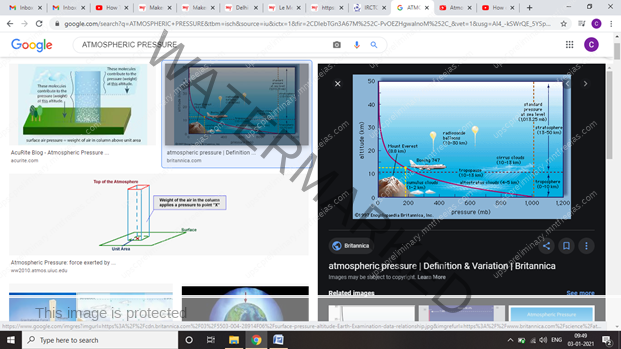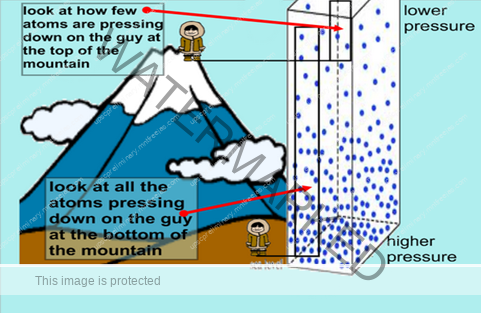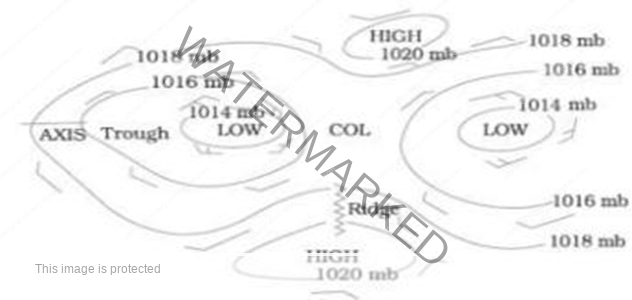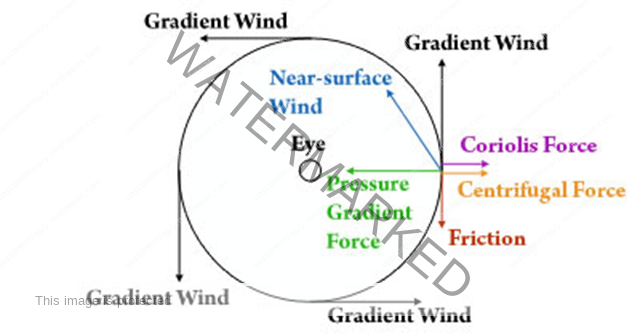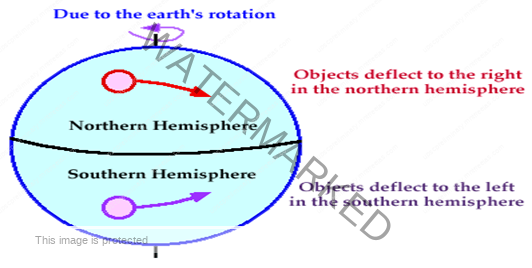- ATMOSPHERIC PRESSURE
- VERTICAL VARIATION OF PRESSURE
- HORIZONTAL DISTRIBUTION OF THE ATMOSPHERIC PRESSURE
- FORCES AFFECTING THE VELOCITY AND DIRECTION OF WIND
- FRICTIONAL FORCE & CORIOLIS FORCE
UNIT 4 – CLIMATOLOGY – PART 14
ATMOSPHERIC PRESSURE
The weight of a column of air contained in a unit area from the mean sea level to the top of the atmosphere is called the ATMOSPHERIC PRESSURE. The atmospheric pressure is expressed in units of Mb and Pascals.
Atmospheric pressure is measured by an instrument called ‘BAROMETER. The atmospheric pressure is not distributed uniformly over the earth. When temperature of the air increases, the air expands and reduces the number of molecules over the unit area.
It leads to reduction in pressure. Similarly, when the temperature falls, the air contracts and the pressure increase. Therefore, the Temperature and Atmospheric Pressure are inversely related.
VERTICAL VARIATION OF PRESSURE
The pressure at sea level is highest and keeps decreasing rapidly with increasing altitude because of the progressive reduction of the mass The decrease amounts to about 1 mb for each 10 m increase in elevation. It does not always decrease at the same rate.
HORIZONTAL DISTRIBUTION OF THE ATMOSPHERIC PRESSURE
Small differences in pressure are highly significant in terms of the wind direction and velocity. Horizontal distribution of pressure is studied by drawing isobars at constant levels. Isobars are lines connecting places having equal pressure
FORCES AFFECTING THE VELOCITY AND DIRECTION OF WIND
The air in motion is called wind. The wind blows from high pressure to low pressure. The wind at the surface experiences friction.
In addition, rotation of the earth also affects the wind movement.
The force exerted by the rotation of the earth is known as THE CORIOLIS FORCE.
Thus, the horizontal winds near the earth surface respond to the combined effect of three forces – the pressure gradient force, the frictional force and the Coriolis force. In addition, the gravitational force acts downward.
PRESSURE GRADIENT FORCE The difference in atmospheric pressure produces a force. The rate of change of pressure with respect to distance is the pressure gradient. The pressure gradient is strong where the isobars are close to each other and is weak where the isobars are apart.
FRICTIONAL FORCE
It affects the speed of the wind. It is greatest at the surface and its influence generally extends upto an elevation of 1 – 3 km. Over the sea surface the friction is minimal.
CORIOLIS FORCE
The rotation of the earth about its axis affects the direction of the wind. This force is called the Coriolis force after the French physicist who described it in 1844. It deflects the wind to the right direction in the northern hemisphere and to the left in the southern hemisphere.
The deflection is more when the wind velocity is high. The Coriolis force is directly proportional to the angle of latitude. It is maximum at the poles and is absent at the equator.
The Coriolis force acts perpendicular to the pressure gradient force.
The pressure gradient force is perpendicular to an isobar. The higher the pressure gradient force, the more is the velocity of the wind and the larger is the deflection in the direction of wind.
As a result of these two forces operating perpendicular to each other, in the low-pressure areas the wind blows around it.
At the equator, the Coriolis force is zero and the wind blows perpendicular to the isobars. The low pressure gets filled instead of getting intensified. That is the reason why tropical cyclones are not formed near the equator.
